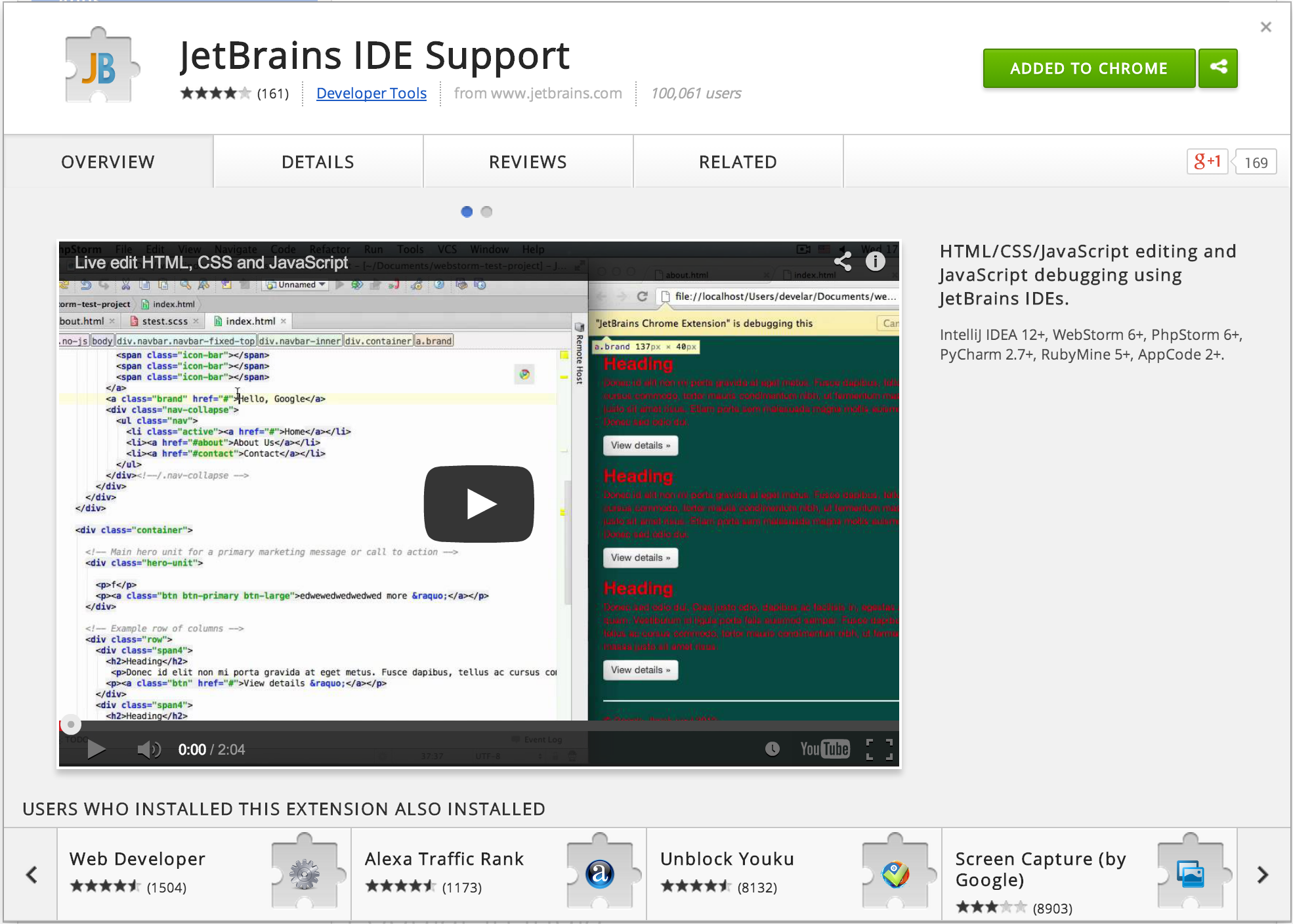Small programs that add new features to your browser and personalize your browsing experience. Discover great apps, games, extensions and themes for Google Chrome. WebStorm presumes that you install browsers according to a standard procedure and assigns each installation an alias which stands for the default path to the browser's executable file or macOS application. In addition to the browsers from the default list, you can configure custom browser installations.
Debugging of JavaScript code is supported in Google Chrome and other browsers of the Chrome family.
To ensure successful debugging, it is enough to specify the built-in web server port and accept the default settings that WebStorm suggests for other debugger options. Player for mac os.
Set the built-in web server port
In the Settings/Preferences dialog Ctrl+Alt+S, go to Build, Execution, Deployment | Debugger.
In the Built-in server area, specify the port where the built-in web server runs. By default this port is set to the default WebStorm port 63342 through which WebStorm accepts connections from services. You can set the port number to any other value starting with 1024 and later.
Optionally
Suppress calls to the files on the built-in server from other computers or from outside WebStorm by clearing the Can accept external connections or Allow unsigned requests checkbox respectively.
Choose the way to remove breakpoints, the default setting is Click.
On the Debugger. Data Views page under the Debugger node, configure advanced debugger options: enable or disable Inline Debugging, specify when you want to see tooltips with object values and expressions evaluation results, and so on. Free torrent for mac os x.
On the Debugger. Stepping page, specify the scripts to be skipped by the debugger.
By default, the debugger does not step only into library scripts. To expand the suppression list, select Do not step into scripts checkbox and add the URL addresses to skip using and .
Starting a debugging session with your default Chrome user data

You may notice that your debugging session starts in a new window with a custom Chrome user data instead of your default one. As a result, the window looks unusual, for example, your bookmarks, the browser history, and the extensions are missing, which altogether breaks your development experience. That happens because WebStorm uses Chrome Debugging Protocol and runs Chrome with the --remote-debugging-port option. However, if Chrome is already started, a debugging port can't be opened for any new or existing Chrome instance that has the same user data. Therefore, when Chrome Debugging Protocol is used, WebStorm always starts a debugging session with in a new window with a custom user data.

Webstorm Chrome Debug Plugin
To open a new Chrome instance with your familiar look-and-feel, configure Chrome in WebStorm to start with your user data. In this case, before starting a debugging session, always make sure that Chrome is not already running with your user data. Otherwise WebStorm still launches another instance of Chrome with your user data but is unable to open a debugging port for it. As a result, WebStorm debugger fails to connect to the application in the new Chrome instance and the debugging session does not start.
Configure Chrome in WebStorm to start with your Chrome user data
Webstorm Chrome Debugger Not Working
Save your Chrome user data anywhere on your machine.
In the Settings/Preferences dialog Ctrl+Alt+S, click Web Browsers under Tools. The Web Browsers page opens.
To create a new Chrome configuration, click . A new item appears in the list. In the Path field, specify the path to the Chrome installation folder.
Select the new configuration and click . The Chrome Settings dialog opens.
Select the Use custom user data directory checkbox and specify the path to your user data directory in the WebStorm settings.
Mark your Chrome browser configuration default as described in Choosing the default WebStorm browser, and don't forget to choose Default from the Browser list when creating a run/debug configuration.
Alternatively, always choose this Chrome browser configuration from the Browser list.
